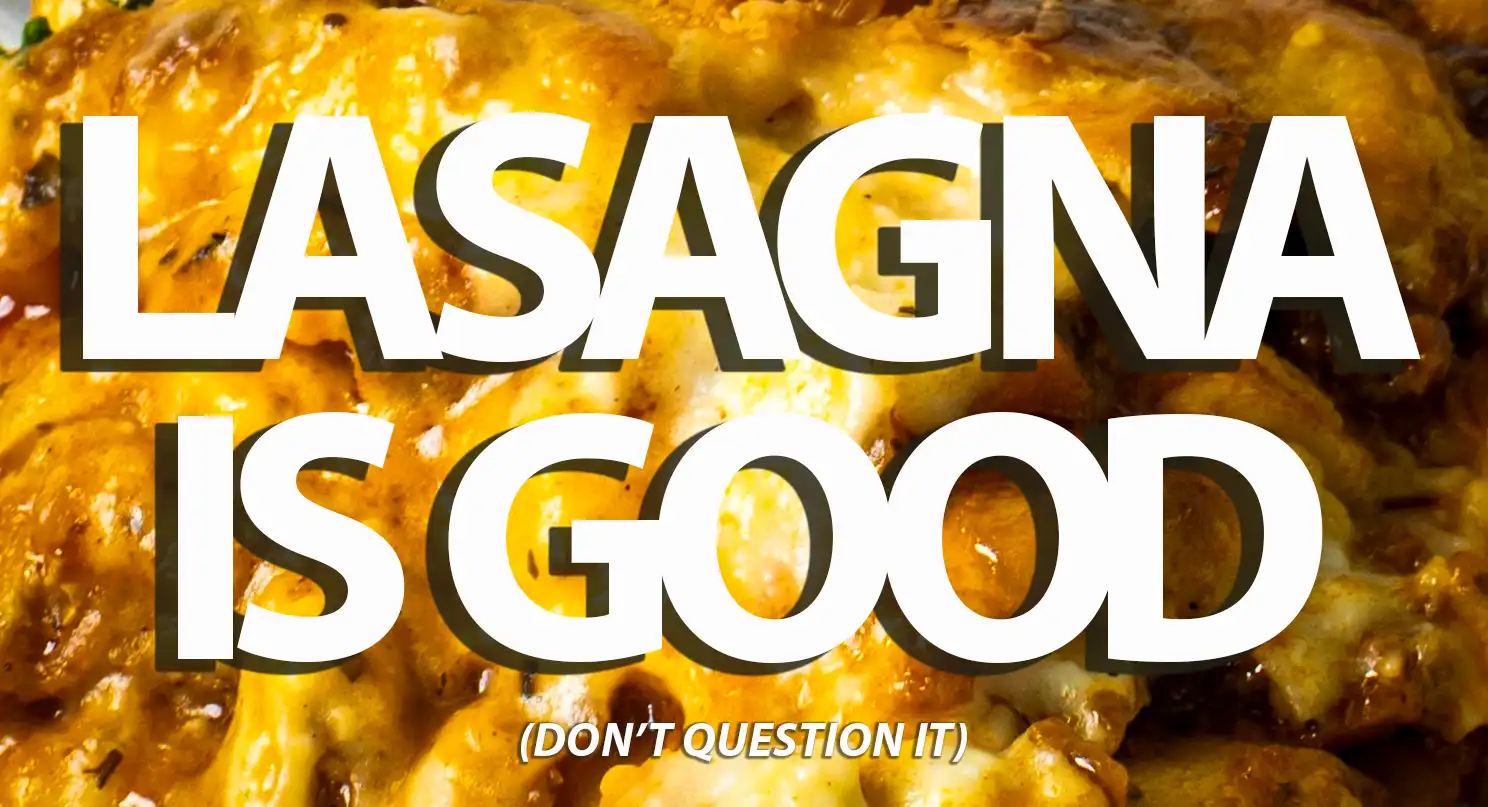Lasagna from Scratch, the Last Trigonometic Mystery

Letters to a Young Chef: Rome(-Style Lasagna) Was not Built in a Day
By Rob Curran
I’m not sure why I make lasagna from scratch. My scratch lasagna doesn’t taste any better than your average grocery-store job, those sheaves of meaty cheese that come prepackaged in their soft aluminum trays. It’s considerably worse than the triple-layered slices of heaven that Di Abruzzo’s makes and can’t rival the toreador red of the sauce in Picone’s lasagna sandwich.
There’s just some instinct to do these things from scratch. It’s probably the same instinct that compelled Edmund Hillary to summit Everest rather than settling for clambering up a gym wall 18,000 times in a row. It’s maybe the same reason that Gertrude Ederle swam the English Channel rather than flapping her hands around really hard in the bath. It’s the sense of achieving something that, from the foot of the mountain, or the shore of the sea, looks unachievable.
If I can do it, you can, too! You can make lasagna from scratch. But, if you’re anything like me, you can’t do it all at once. If I were Hillary, I would have climbed the first half of Everest, marked the spot with one of my woolly sweaters, gone home, recuperated for six months, and then parachuted back to my v-neck and taken the job up from there.
If lasagna was a theorem it would be ragu sauce plus two cheese sauces divided by three parboiled pasta strips multiplied by 35 minutes in an oven at 375 degrees = Heaven.
It’s not that complicated, but it is time consuming. To make all that in from scratch in one day, you would end up serving dinner at midnight, and possibly attack your fellow diners in a fit of resentment while serving it. Plus, it’s a well-known fact that ragu gets better the next day, and lasagna only melds after sitting around for a few hours. After many failed attempts to solve this fomula, I hit upon the following trigonometric insight, which I’m calling the Curran Lasagna Time Conundrum. Cheese sauces and pasta do very quickly. To make from scratch, ragu requires more time.
Hypothesis: the day before you make lasagna, make spaghetti Bolognese.
According to my Italian sources, there are two Italies. In one Italy, sauces start with olive oil and garlic. In the other Italy, sauces start with olive oil and butter and onion. My lasagna is from this second Italy. In a large saucepan, I fry the diced onion with something sweet like diced carrots and celery in a mixture of olive oil and butter. I remove this from the heat, and, in the same pan, brown a pound-and-a-half of mince and a pound of Italian sausages, both well salted (halve these quantities if you’re doing one-day lasagna.) Once the meat is browned, I add the vegetables back in, with two cans of San Marzano tomatoes (drained of their can juices). I also add in the meat of a large fresh tomato, which I have skinned and pipped (this is a very simple process…just boil the large tomato until you see the skin crack, douse in cold water in a colander, and then the skin should peel easily. With a sharp knife, remove the tomato’s vine stub and as many of the pips as you can, then just dump the good stuff into your pan.) I add a few dashes of Italian seasoning, if it’s around and some black pepper. I bring the ragu sauce to a boil and simmer, uncovered, at medium heat for 35 minutes. Meanwhile, I’m boiling up some spaghetti or rigatoni. When it’s time to take the Ragu off the heat, I throw in a couple of sizable dollops of butter. I drain the pasta, pour myself a glass of red wine, and take the rest of the night off.
The next day, about an hour before dinner time, I remove the leftover ragu from the fridge. I make a simple roux, mixing one tablespoon of flour with one tablespoon of butter and heating in a small saucepan until it’s a blended yellow liquid. To that liquid I add one cup of milk, heated in the microwave. I stir that together on medium heat until it thickens into a smooth sauce. I then dump in about a quarter of a block of shredded cheese. Two table-spoons of sherry can accentuate the tang. But a good sharp cheddar will hold its tang without the sherry. In a separate bowl, I add 24 ounces of ricotta cheese, a couple of leaves of fresh basil or two teaspoons of dried basil, and two egg yolks. Mix those, without heating, with a spoon. Meanwhile, parboil about 10 strips of lasagna, draining in a colander when they’re still al dente.
Place a layer of ragu at the bottom of a large casserole dish. Spread the ricotta mixture so that it obscures the meat. Add a layer of lasagna noodles until they obscure the ricotta (trimming as necessary). Repeat for another layer. On top of the second (or third, depending on the size and depth of your dish, and if you have enough sauce) layer of lasagna, pour the cheddar cheese sauce. Sprinkle the top of the casserole with powdered Parmesan (preferably fresh, just for the scratchness of it all). Insert into an oven preheated to 425 Fahrenheit, initially covering with aluminum foil, for 20 minutes. Remove the foil so that you can brown the top of the lasagna, and watch, making sure it doesn’t blacken, for about 10 more minutes.
Allow the Lasagna to sit for a few minutes before cutting into squares, using a sharp knife. The lasagna will taste amazing straight away, and heavenly the next day. It’s a three-day journey…think of it as the time-cheese-meat Pythagorean triangle
QED.

